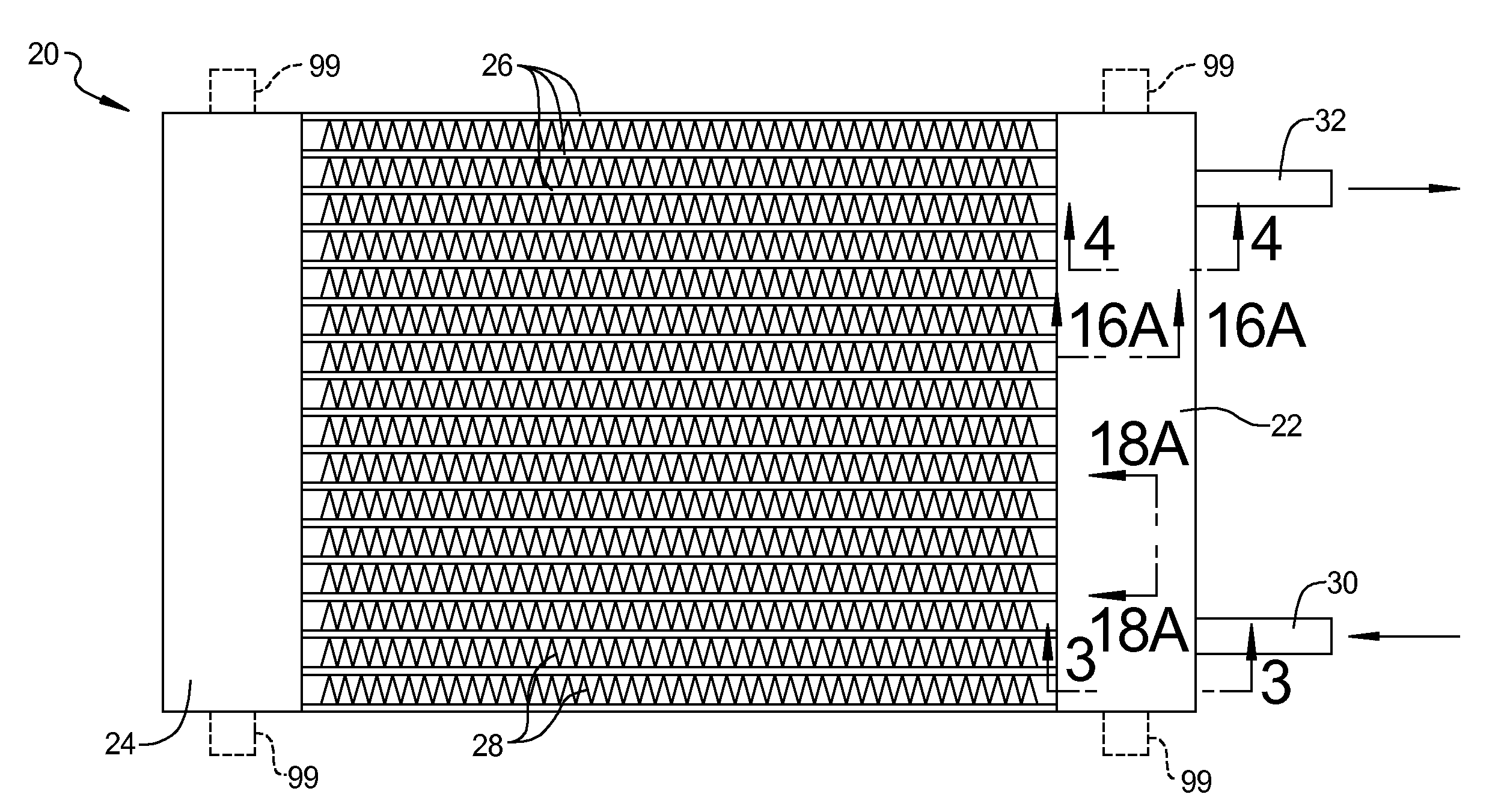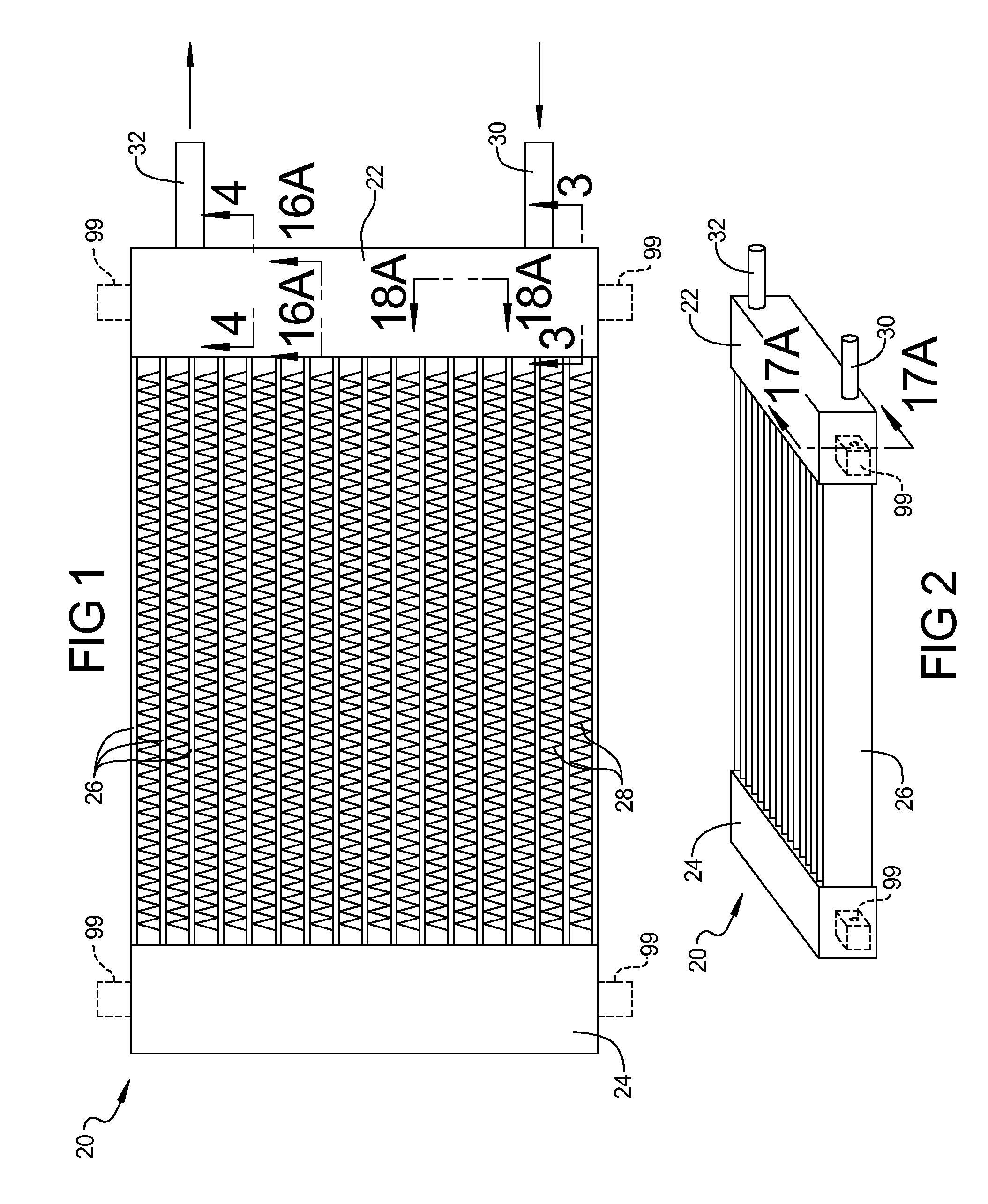Laminated sheet manifold for microchannel heat exchanger
a microchannel heat exchanger and manifold technology, applied in the field of heat exchangers, can solve the problems of inability to accept further, non-uniform temperature distribution, and hot spots, and achieve the effect of facilitating the use of the heat exchanger
- Summary
- Abstract
- Description
- Claims
- Application Information
AI Technical Summary
Benefits of technology
Problems solved by technology
Method used
Image
Examples
Embodiment Construction
[0043]The following description is merely exemplary in nature and is not intended to limit the present teachings, applications, or uses. It should be understood that throughout the drawings, corresponding reference numerals indicate like or corresponding parts and features (e.g., 20, 120, 220, etc.). Furthermore, it should be understood that as used herein the terms “left,”“right,”“up,”“down,” etc. are relative terms and refer only to the orientations depicted in the drawings.
[0044]Referring to FIGS. 1 and 2, a microchannel heat exchanger 20 utilizing manifolds 22, 24 according to the present teachings is shown. Heat exchanger 20 includes a plurality of microchannel tubes 26 that extend between and communicate with manifolds 22, 24. A plurality of fins 28 is disposed between adjacent tubes 26 in heat-conducting relation therewith. A supply line 30 and a return line 32 are connected to and communicate with manifold 22. Supply line 30 is operable to supply a flow of coolant to heat ex...
PUM
| Property | Measurement | Unit |
|---|---|---|
| size | aaaaa | aaaaa |
| distance | aaaaa | aaaaa |
| sizes | aaaaa | aaaaa |
Abstract
Description
Claims
Application Information
 Login to View More
Login to View More - R&D
- Intellectual Property
- Life Sciences
- Materials
- Tech Scout
- Unparalleled Data Quality
- Higher Quality Content
- 60% Fewer Hallucinations
Browse by: Latest US Patents, China's latest patents, Technical Efficacy Thesaurus, Application Domain, Technology Topic, Popular Technical Reports.
© 2025 PatSnap. All rights reserved.Legal|Privacy policy|Modern Slavery Act Transparency Statement|Sitemap|About US| Contact US: help@patsnap.com



